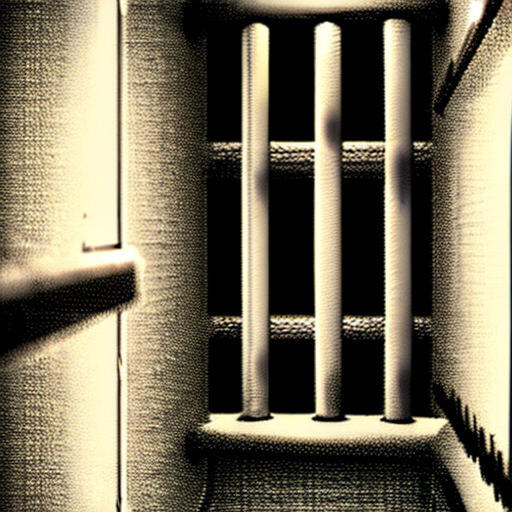
Image Credit: SaulRoth.net
By Saul Roth
The prison system is a critical component of every country’s criminal justice system, with the primary goal of detaining individuals who have been convicted of crimes and rehabilitating them so that they can be reintegrated into society. However, the prison system varies significantly from country to country, with some systems being more effective at achieving their goals than others. In this essay, we will explore the prison systems of various countries around the world and compare their approaches to detention, rehabilitation, and reintegration.
United States
One of the most well-known prison systems in the world is that of the United States, which has the highest incarceration rate of any country, with over 2.3 million people currently behind bars. The U.S. prison system is largely punitive in nature, with a focus on punishment rather than rehabilitation. Prisons in the U.S. are overcrowded, and conditions are often poor, with inadequate access to healthcare, education, and other services. The U.S. also has a high recidivism rate, with over half of released prisoners returning to prison within three years.
Norway
In contrast, the Norway takes a more rehabilitative approach, with a focus on helping inmates to reintegrate into society. Norway’s prisons are designed to be more like residential communities, with shared living quarters, access to education and vocational training, and opportunities for outdoor recreation. Inmates are also given responsibilities, such as cooking and cleaning, which are intended to help them develop life skills that will be useful once they are released. Norway has one of the lowest recidivism rates in the world, with only 20% of released prisoners returning to prison.
Sweden
Another country with a unique approach to the prison system is Sweden, which focuses on human rights and the dignity of inmates. Sweden’s prisons are designed to be as similar as possible to life outside of prison, with inmates having access to private bedrooms and bathrooms, as well as kitchens and laundry facilities. Inmates are also given the opportunity to work and earn a salary, and they are encouraged to take part in educational and vocational programs. Sweden’s prison system is based on the belief that everyone has the potential to change and that rehabilitation is the key to reducing crime.
Japan
In Japan, the prison system is centered on the concept of repentance and rehabilitation. Prisons in Japan are known for their strict discipline, with inmates expected to follow a strict set of rules and regulations. Inmates are also required to work, and they are given the opportunity to participate in educational and vocational programs. The Japanese prison system is based on the belief that everyone has the potential to change and that rehabilitation is the key to reducing crime.
Netherlands
Netherlands is also focused on rehabilitation, with a strong emphasis on education and vocational training. Prisons in the Netherlands are designed to be as similar as possible to life outside of prison, with inmates having access to private bedrooms and bathrooms, as well as kitchens and laundry facilities. Inmates are also given the opportunity to work and earn a salary, and they are encouraged to take part in educational and vocational programs. The Dutch prison system is based on the belief that everyone has the potential to change and that rehabilitation is the key to reducing crime.
South Africa
The prison system in South Africa is significantly different from those in other countries, as it is heavily impacted by the country’s history of apartheid. Many of South Africa’s prisons are overcrowded and underfunded, and conditions are often poor, with inadequate access to healthcare, education, and other services. The South African prison system is also marked by high levels of violence and corruption, and there are significant concerns about the treatment of inmates.
Australia
In contrast, the prison system in Australia is generally seen as more effective and humane, with a focus on rehabilitation and reintegration. Prisons in Australia are designed to be more like residential communities, with shared living quarters, access to education and vocational training, and opportunities for outdoor recreation. Inmates are also given responsibilities, such as cooking and cleaning, which are intended to help them develop life skills that will be useful once they are released. In addition, the Australian prison system has a number of programs in place to support the reintegration of inmates into society, including employment assistance, housing support, and drug and alcohol treatment.
Canada
Canada is also centered on rehabilitation and reintegration, with a focus on providing inmates with the tools and resources they need to succeed upon release. Prisons in Canada are designed to be more like residential communities, with shared living quarters, access to education and vocational training, and opportunities for outdoor recreation. Inmates are also given the opportunity to work and earn a salary, and they are encouraged to take part in educational and vocational programs. In addition, the Canadian prison system has a number of programs in place to support the reintegration of inmates into society, including employment assistance, housing support, and drug and alcohol treatment.
In conclusion, the prison systems of various countries around the world vary significantly in their approaches to detention, rehabilitation, and reintegration. Some countries, such as the United States and South Africa, have prison systems that are largely punitive in nature, with poor conditions and high recidivism rates. Other countries, such as Norway, Sweden, Japan, the Netherlands, Australia, and Canada, have prison systems that are more focused on rehabilitation and reintegration, with a focus on providing inmates with the tools and resources they need to succeed upon release. Overall, the most effective prison systems are those that balance the need for punishment with the importance of rehabilitation and reintegration, and that recognize the value of treating inmates with dignity and respect.

Recent Comments